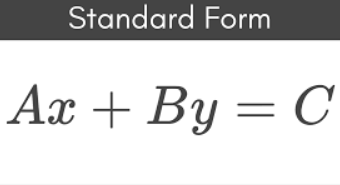Standard Form Calculator: Fast, Accurate, and Easy to Use
Quickly convert any number to standard form with our easy-to-use calculator. Perfect for students, professionals, or anyone needing accurate results fast. Enter your number below to get started!
RESULTS
Why Use Standard Form?
Standard form is a powerful way to simplify very large or small numbers, making them easier to read, compare, and compute. Widely used in fields like science, engineering, and mathematics, this notation helps manage quantities such as the speed of light or microscopic measurements. Our calculator enables effortless conversion, allowing you to focus on your work without being bogged down by complex calculations.
Key Features of the Standard Form Calculator
- Convert to Standard Form: Effortlessly change any number into standard notation, a concise format featuring a non-zero digit, a decimal point, and an exponent (e.g., 4.5 \times 10^6).
- Scientific E-Notation: Transform numbers into scientific notation, a standard form that represents large or small values using “a times 10 to the power of n” (e.g., 6.02 \times 10^{15}). Ideal for scientific calculations where precision and readability are essential.
- Engineering Notation: Simplify numbers using multiples of three powers of ten, making it easier to handle values in thousands, millions, or even billionths. Particularly useful for engineers and scientists dealing with metric units.
- Real Number Format: Switch between standard and regular number formats to cross-check results, ensuring both clarity and accuracy in your calculations.
Step-by-Step Guide: Using the Standard Form Calculator
Convert Positive Numbers to Standard Form:
- Identify the first non-zero digit and place the decimal point immediately after it.
- Count how many decimal places you need to move to reach this format.
- The number of moves determines the exponent for 10 (e.g., 4500000 becomes 4.5 \times 10^6).
- Use the calculator to enter your number and instantly convert it to standard form.
Convert Extremely Small Numbers to Standard Form:
- Enter the tiny number, including all significant digits, into the calculator.
- Look for a negative exponent if the number is smaller than one.
- Adjust the leading digit to be between 1 and 10, and let the calculator display the correct standard form.
Examples of How the Calculator Can Be Used
- Large Numbers: Convert millions or billions (e.g., 4,500,000 to 4.5 \times 10^6) into a simple format.
- Small Numbers: Handle tiny values, such as 0.000056, by converting them into 5.6 \times 10^{-5}.
Related Table: Powers of 10
| Power (10n) | Value |
|---|---|
| 100 | 1 |
| 101 | 10 |
| 102 | 100 |
| 103 | 1,000 |
| 104 | 10,000 |
| 105 | 100,000 |
| 106 | 1,000,000 |
| 107 | 10,000,000 |
| 108 | 100,000,000 |
| 109 | 1,000,000,000 |
| 1010 | 10,000,000,000 |
Additional Calculator Features
- Scientific E-Notation: Perfect for reducing large or small numbers into a simpler form. Essential for scientists, engineers, and students who need to handle significant digits effectively.
- Engineering Notation: Makes complex calculations easy by organizing numbers into sets of three zeros, minimizing errors in mathematical or technical contexts.
- Real Number Format: Provides the option to see numbers in their everyday form, aiding in verification and understanding.
Practical Scenarios and Benefits
- Convert Astronomical Numbers: Easily convert massive figures, like distances in space, into standard form for readability and calculations.
- Educational Use: A valuable tool for teaching and learning mathematics, making complex numbers manageable and understandable.
FAQs
Can I perform operations with numbers in standard form?
Yes, the calculator helps you use these values in additional calculations.
Does the calculator handle fractions or equations?
Absolutely, it supports a range of mathematical functions, including fractions and systems of equations.
Will an adblocker affect the calculator?
You might need to disable the adblocker to ensure all features work properly.

